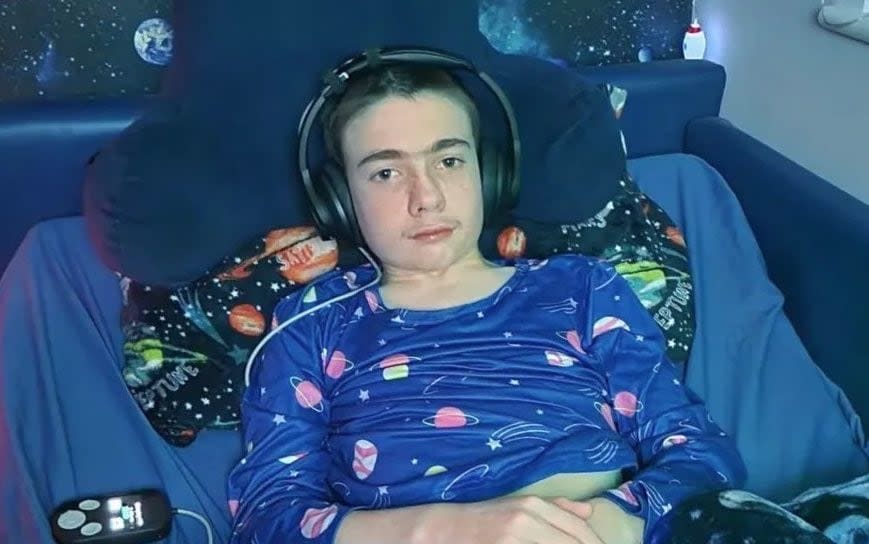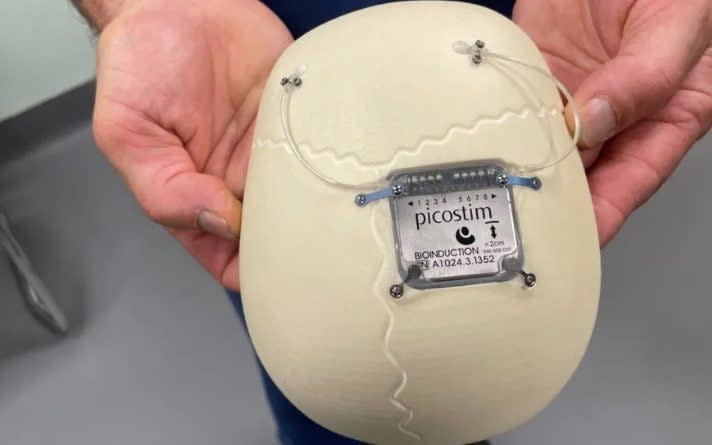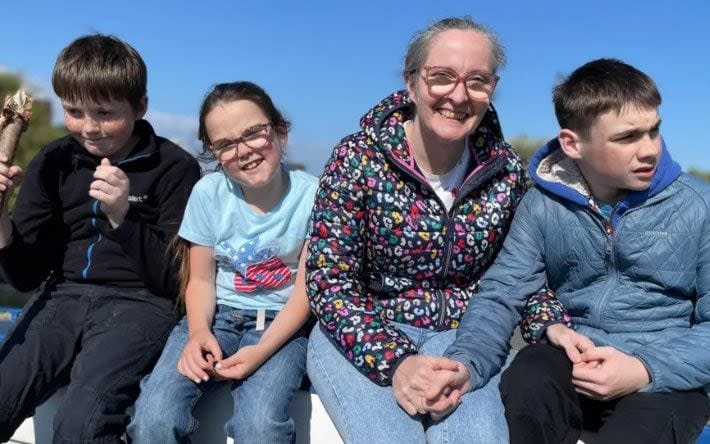Epileptic boy has seizure-reducing device fitted at Great Ormond Street in world first

A British boy with epilepsy has become the first child in the world to have a seizure-reducing device fitted to his skull.
Oran Knowlson underwent a procedure at Great Ormond Street Hospital (GOSH) in October when he was just 12 years old and a rechargeable neurostimulator was fitted to his head. Electrodes carry electrical signals deep into the brain and are designed to minimise seizures as part of deep brain stimulation (DBS) therapy.
Oran had his first seizure aged three and had daily seizures which became more severe over time, often resulting in him needing to be resuscitated.
Since being fitted with the device Oran, now 13, has seen an 80 per cent reduction in day-time seizure frequency and severity.
Previous DBS treatments involved fitting a device to the chest that sent electrodes running up the neck to the brain. But it needed replacing every five years. This new device does not need to be replaced and can be recharged with specialist headphones.
Justine, Oran’s mother, said: “Before the seizures began Oran was hitting all his milestones but as seizures became more severe, we lost more and more of Oran.

“From being a happy, energetic three-year-old, he struggled to engage in the world due to his medication and seizures – but he has still got his sense of humour.
“We’ve tried everything, but this is the first real shot we’ve been given in years, there has been no ‘what next’ until now.
“Unless somebody takes the first step on a trial like this, there is never going to be a better and there has to be a better for our family.”
She added that since the device was switched on in December, delivering a constant flow of electricity to Oran’s brain to help regulate the firing of the electrical pulses, “we’ve seen a big improvement”.
“The quality of life improvement has been invaluable for Oran,” she said. “He’s a lot more chatty, he’s more engaged. He’s turned 13 and I definitely now have a teenager – he’s happy to tell me no. But that adds to his quality of life, when he can express himself better.”

The trial, known as the CADET pilot, is funded by the Royal Academy of Engineering and will recruit three additional patients with Lennox-Gastaut syndrome in the future. A subsequent full trial will then fit the device to a total of 22 patients.
Prof Tim Denison, lead engineer of the project from the University of Oxford and Royal Academy of Engineering Chair in Emerging Technologies, said: “Oran is the first child in the world to receive this device and we are extremely pleased that it has had such a positive benefit for him and his family.”
Martin Tisdall, consultant paediatric neurosurgeon at GOSH and honorary associate professor at UCL, said: “For Oran and his family, epilepsy completely changed their lives and so to see him riding a horse and getting his independence back is absolutely astounding. We couldn’t be happier to be part of their journey.
“Deep brain stimulation brings us closer than ever before to stopping epileptic seizures for patients who have very limited effective treatment options.
“We are excited to build the evidence base to demonstrate the ability of deep brain stimulation to treat paediatric epilepsy and hope in years to come it will be a standard treatment we can offer.”


